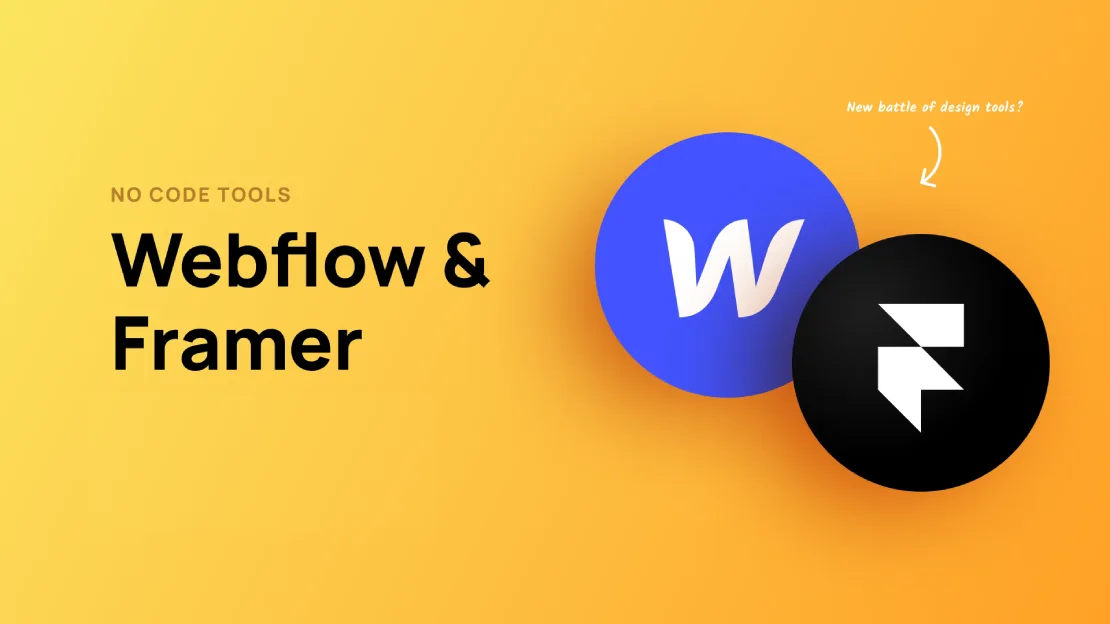Design Smarter: Why US Designers Prefer Webflow Over Framer
In the ever-changing landscape of web design, two prominent no-code platforms—Webflow and Framer—remain at the forefront of discussions. However, among designers in the United States, Webflow is becoming the preferred choice in 2025. What accounts for this preference? Let us examine the primary reasons why professionals opt for Webflow instead of Framer.
What is Webflow?
Webflow is a visual development platform that requires no coding, allowing you to create robust, responsive websites through a user-friendly interface that produces clean HTML, CSS, and JavaScript.
Key Features of Webflow:
Visual CMS
Custom code flexibility
Built-in SEO tools
Clean code export
Secure hosting with AWS
Animation & interaction support
What is Framer?
Framer is an innovative no-code platform that integrates design and publishing functionalities into one cohesive system. Renowned for its elegant animations and rapid hosting capabilities, it is perfectly suited for individual websites and startup landing pages.
Key Features of Framer:
Intuitive interface
Auto-responsive design
Advanced animation tools
Built-in hosting
Easy collaboration
Why US Designers Prefer Webflow Over Framer
1. Greater Design Control
Webflow provides precise control over layout, structure, and styling. Utilizing Flexbox, Grid, and custom interactions, designers in the United States can develop advanced, responsive websites without the need for coding.
2. Built-In SEO Optimization
Webflow includes advanced SEO features out-of-the-box:
Custom meta titles and descriptions
Automatic XML sitemap
Clean URLs and semantic HTML5
Image alt tagging
Schema markup support
Framer is making progress; however, Webflow is more conducive to SEO, particularly for U.S. agencies that emphasize search performance.
3. Professional CMS Integration
For bloggers, startups, and creative portfolios, Webflow’s CMS (Content Management System) provides the following features:
Custom content types
Dynamic pages
Team collaboration
Structured data for SEO
Framer presently does not possess the same level of depth and flexibility as Webflow’s CMS when it comes to managing complex content.
4. Exportable, Clean Code
U.S. freelancers and developers appreciate that Webflow allows them to export HTML, CSS, and JavaScript code—beneficial for client transitions, backups, or moving to a different platform.
In contrast, Framer does not offer complete code export, which restricts developers’ flexibility.
5. Ideal for Agencies and Freelancers
Agencies across New York, LA, and Chicago are choosing Webflow for:
Scalability
SEO precision
White-label design
Client-friendly editing tools
Framer is excellent for rapid prototyping; however, it does not possess the enterprise-level scalability that large U.S. agencies require.
Pricing Comparison: Webflow vs. Framer (2025)
| Plan Type | Webflow (USD) | Framer (USD) |
|---|---|---|
| Free Plan | Yes | Yes |
| CMS Plan | $29/month | $25/month |
| Business Plan | $49/month | $40/month |
| Code Export | ✅ Yes | ❌ No |
| Best for SEO | ✅ Yes | ⚠️ Basic |
Conclusion: Webflow Wins for US-Based Designers
If you’re a U.S. designer, agency owner, or creative professional looking for:
Design control
Built-in SEO
CMS capabilities
Exportable code
Then Webflow is the smarter choice in 2025.
Framer excels in rapid visual prototyping and personal projects, whereas Webflow offers comprehensive capabilities for design, development, and deployment all in a single platform.



